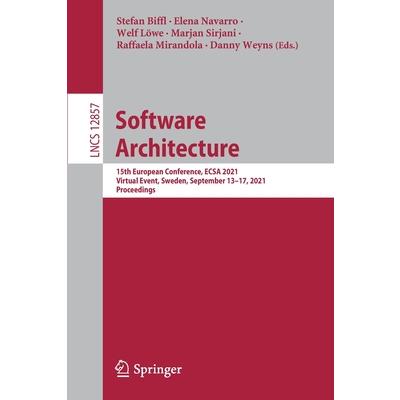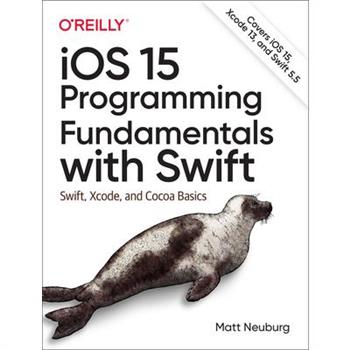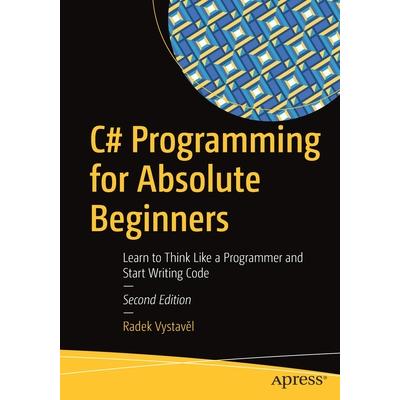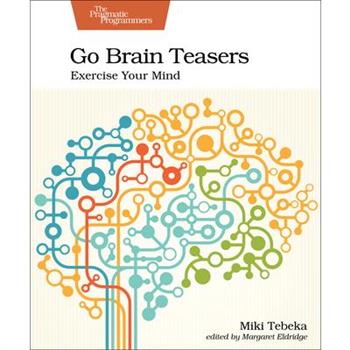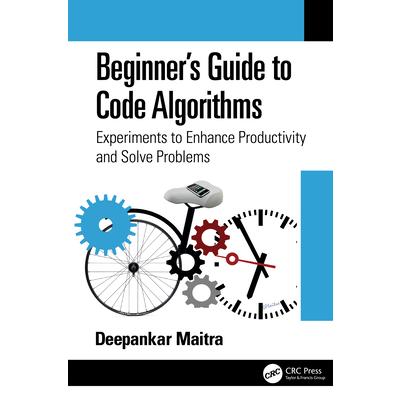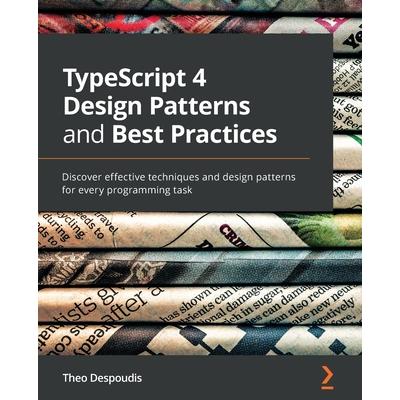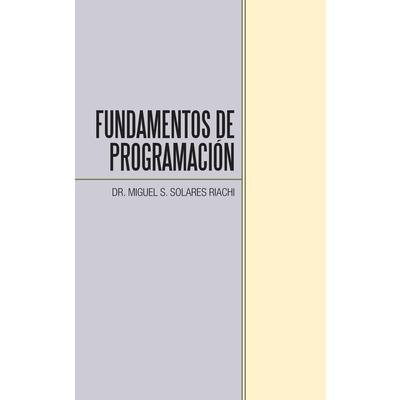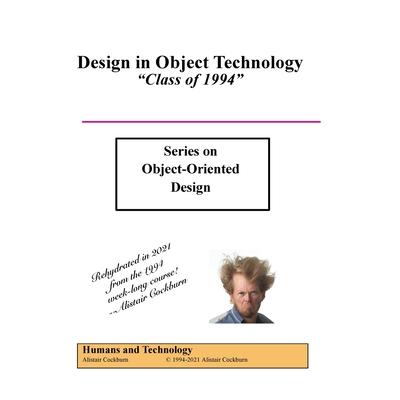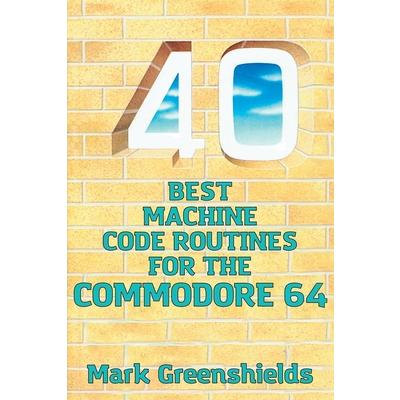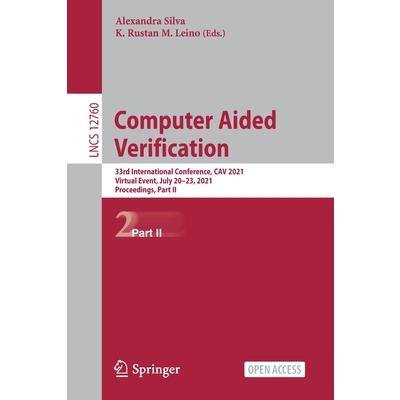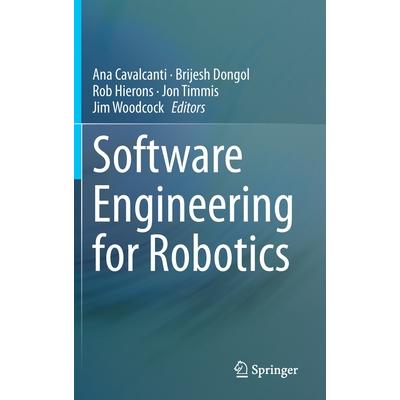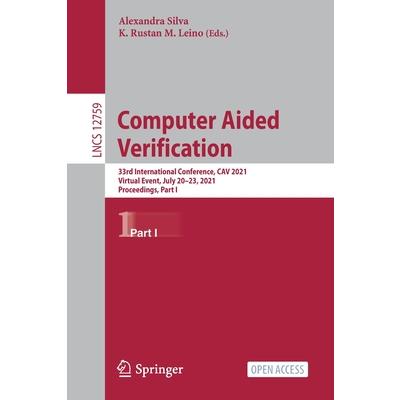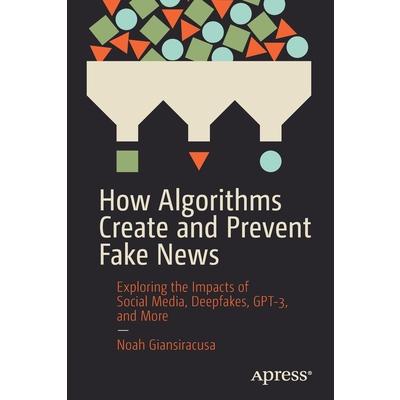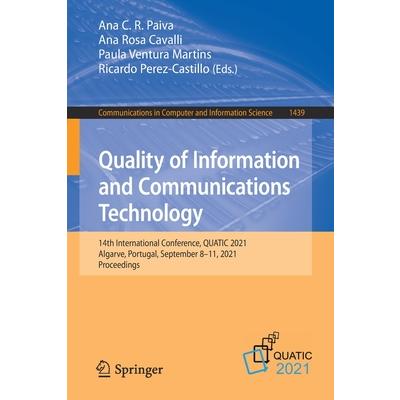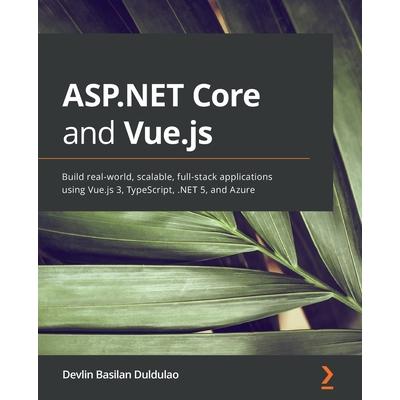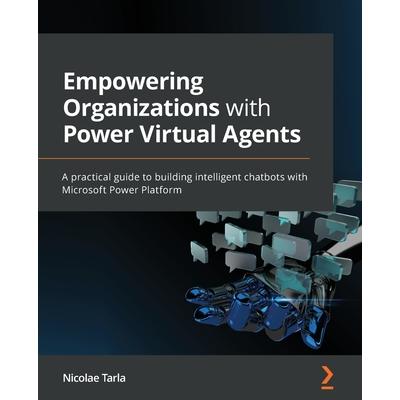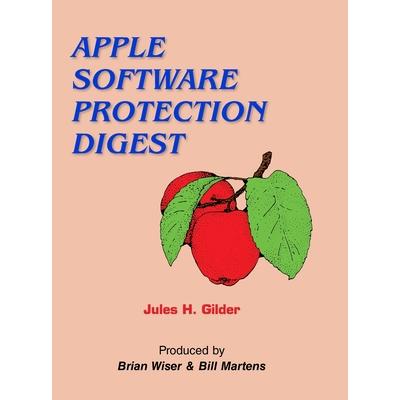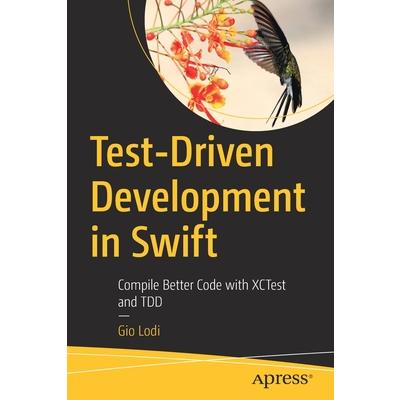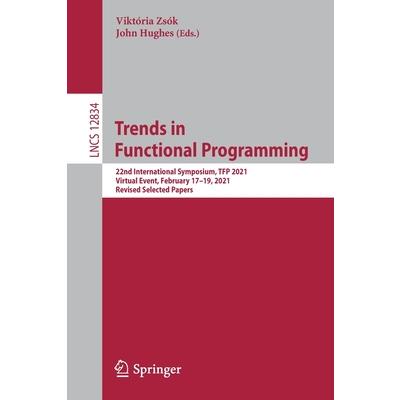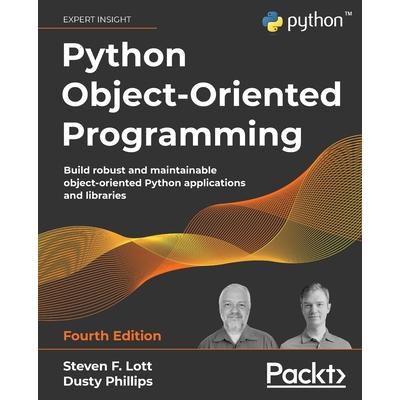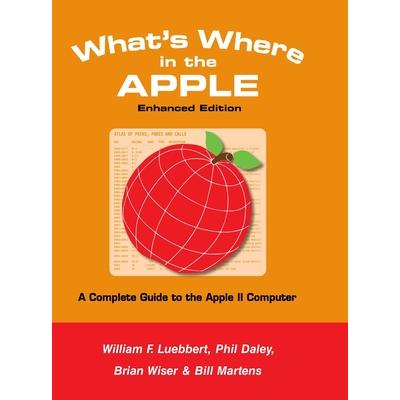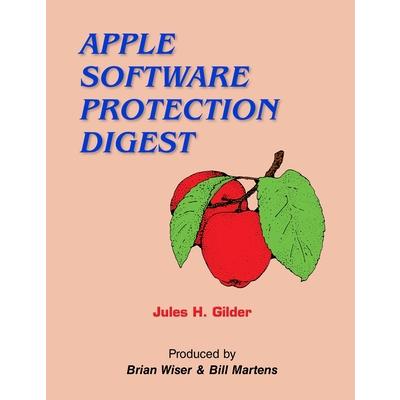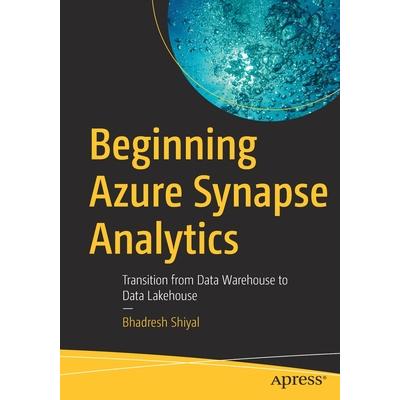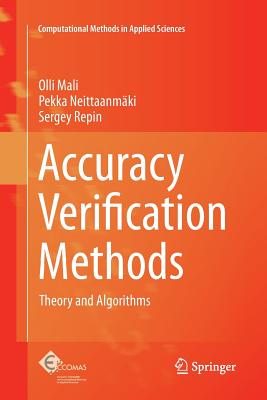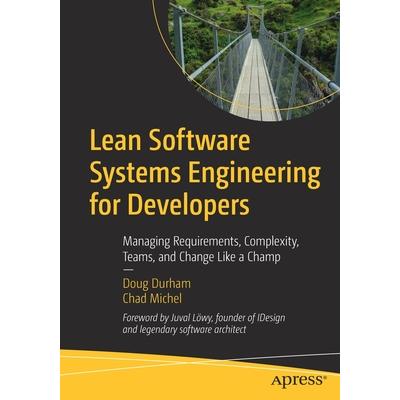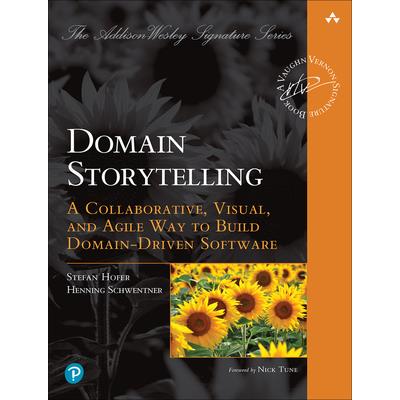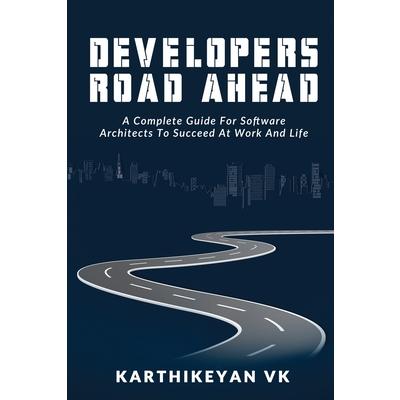Software Architecture
This book constitutes the refereed proceedings of the 15th International Conference on Software Architecture, ECSA 2021, held in Sweden, in September 2021. Due to the COVID-19 pandemic, the conference was held virtually. For the Research Track, 11 full papers, presented together with 5 short papers, were carefully reviewed and selected from 58 submissions. The papers are organized in topical sections as follows: architectures for reconfigurable and self-adaptive systems; machine learning for software architecture; architectural knowledge, decisions, and rationale; architecting for quality attributes; architecture-centric source code analysis; and experiences and learnings from industrial case studies.
IOS 15 Programming Fundamentals with Swift
Move into iOS development by getting a firm grasp of its fundamentals, including the Xcode 13 IDE, Cocoa Touch, and the latest version of Apple's acclaimed programming language, Swift 5.5. With this thoroughly updated guide, you'll learn the Swift language, understand Apple's Xcode development tools, and discover the Cocoa framework. Explore Swift's object-oriented concepts Become familiar with built-in Swift types Dive deep into Swift objects, protocols, and generics Tour the life cycle of an Xcode project Learn how nibs are loaded Understand Cocoa's event-driven design Communicate with C and Objective-C In this edition, catch up on the latest iOS programming features: Structured concurrency: async/await, tasks, and actors Swift native formatters and attributed strings Lazy locals and throwing getters Enhanced collections with the Swift Algorithms and Collections packages Xcode tweaks: column breakpoints, package collections, and Info.plist build settings Improvements in Git integration, localization, unit testing, documentation, and distribution And more!
C# Programming for Absolute Beginners
Get started using the C# programming language. Based on the author's 15 years of experience teaching beginners, this book provides you with a step-by-step introduction to the principles of programming, or rather, how to think like a programmer. The task-solution approach will get you immersed, with minimum theory and maximum action.What You Will LearnUnderstand what programming is all aboutWrite simple, but non-trivial, programsBecome familiar with basic programming constructs such as statements, types, variables, conditions, and loopsThink like a programmer and combine these programming constructs in new waysGet to know C# as a modern, mainstream programming language, and Visual Studio as one of the world's most popular programming toolsWho This Book Is ForThose with very little orno experience in computer programming, who know how to use a computer, install a program, and navigate the web
Learning Algorithms
When it comes to writing efficient code, every software professional needs to have an effective working knowledge of algorithms. In this practical book, author George Heineman (Algorithms in a Nutshell) provides concise and informative descriptions of key algorithms that improve coding. Software developers, testers, and maintainers will discover how algorithms solve computational problems creatively. Each chapter builds on earlier chapters through eye-catching visuals and a steady rollout of essential concepts, including an algorithm analysis to classify the performance of every algorithm presented in the book. At the end of each chapter, you'll get to apply what you've learned to a novel challenge problem -- simulating the experience you might find in a technical code interview. With this book, you will: Examine fundamental algorithms central to computer science and software engineering Learn common strategies for efficient problem solving -- such as divide and conquer, dynamic programming, and greedy approaches Analyze code to evaluate time complexity using big O notation Use existing Python libraries and data structures to solve problems using algorithms Understand the main steps of important algorithms
Computer Algebra in Scientific Computing
This book constitutes the proceedings of the 23rd International Workshop on Computer Algebra in Scientific Computing, CASC 2021, held in Sochi, Russia, in September 2021. The 24 full papers presented together with 1 invited talk were carefully reviewed and selected from 40 submissions. The papers cover theoretical computer algebra and its applications in scientific computing.
Oracle Cloud Infrastructure for Solutions Architects
Develop enterprise architect skills by building secure, highly available, and cost-effective solutions with Oracle Functions, Terraform, and the Oracle Cloud VMware SolutionKey Features: Explore Oracle's Gen 2.0 Cloud infrastructure and its high-performance computing capabilitiesUnderstand hybrid cloud capabilities and learn to migrate apps from on-premises VMware clusters to OCILearn to create Kubernetes clusters and run containerized applications on Oracle's Container EngineBook Description: Oracle Cloud Infrastructure (OCI) is a set of complementary cloud services that enables you to build and run a wide range of applications and services in a highly available hosted environment. This book is a fast-paced practical guide that will help you develop the capabilities to leverage OCI services and effectively manage your cloud infrastructure.Oracle Cloud Infrastructure for Solutions Architects begins by helping you get to grips with the fundamentals of Oracle Cloud Infrastructure, and moves on to cover the building blocks of the layers of Infrastructure as a Service (IaaS), such as Identity and Access Management (IAM), compute, storage, network, and database. As you advance, you'll delve into the development aspects of OCI, where you'll learn to build cloud-native applications and perform operations on OCI resources as well as use the CLI, API, and SDK. Finally, you'll explore the capabilities of building an Oracle hybrid cloud infrastructure.By the end of this book, you'll have learned how to leverage the OCI and gained a solid understanding of the persona of an architect as well as a developer's perspective.What You Will Learn: Become well-versed with the building blocks of OCI Gen 2.0 CloudControl access to your cloud resources using IAM componentsManage and operate various compute instancesTune and configure various storage options for your appsDevelop applications on OCI using OCI Registry (OCIR), Cloud Shell, OCI Container Engine for Kubernetes (OKE), and Service MeshDiscover ways to use object-relational mapping (ORM) to create infrastructure blocks using Terraform codeWho this book is for: This book is for cloud architects, cloud developers, and DevSecOps engineers who want to learn how to architect and develop on Oracle Cloud Infrastructure by leveraging a wide range of OCI IAAS capabilities. Working knowledge of Linux, exposure to basic programming, and a basic understanding of networking concepts are needed to get the most out of this book.
Go Brain Teasers
This book contains 25 short programs that will challenge your understanding of Go. Like any big project, the Go developers had to make some design decisions that at times seem surprising. This book uses those quirks as a teaching opportunity. By understanding the gaps in your knowledge, you'll become better at what you do. Some of the teasers are from the author's experience shipping bugs to production, and some from others doing the same. Teasers and puzzles are fun, and learning how to solve them can teach you to avoid programming mistakes and maybe even impress your colleagues and future employers. Programmers love the Go (golang) programming language because of its efficiency and simple tooling. But that doesn't mean programming in Go is without challenges, like hidden dependencies that trip up the compiler and interesting string type conversions that differ from languages like Python. Work your way through 25 short brain teasers, and learn the nuances of Go in one of the most fun and creative ways around. Challenge yourself and challenge your assumptions to gain a more in-depth understanding of integers, strings, Unicode, compiler behavior, and a variety of subtle programming gotchas that might otherwise trip you up. Just read a short program written in Go, try to guess the output, run the code yourself, and then go to the next page for an explanation of the solution. By working through these brain teasers, you'll tighten up your Go programming skills and have lots of fun at the same time. Taken from real-world, programming problems, conference talks, and meetup quizzes, these brain teasers provide an effective learning tool that's as enjoyable as it is educational. What You Need: This book assumes you know Go at some level and have experience programming with it. *NOTE: * We use Go version 1.14.1 to run the code; the output might change in future versions. You will need a working Go environment, you can download it from https: //golang.org/dl. You will probably want a good IDE for Go, two of the most popular ones are Visual Studio Code and GoLand.
Beginner’s Guide to Code Algorithms
Do you have creative ideas that you wish you could transform into code? Do you want to boost your problem solving and logic skills? Do you want to enhance your career by adopting an algorithmic mindset? In our increasingly digital world, coding is an essential skill. Communicating an algorithm to a machine to perform a set of tasks is vital. Beginner's Guide to Code Algorithms: Experiments to Enhance Productivity and Solve Problems written by Deepankar Maitra teaches you how to think like a programmer. The author unravels the secret behind writing code - building a good algorithm. Algorithmic thinking leads to asking the right question and enables a shift from issue resolution to value creation. Having this mindset will make you more marketable to employers. This book takes you on a problem-solving journey to expand your mind and increase your willingness to experiment with code. You will: Learn the art of building an algorithm through hands-on exercises Understand how to develop code for inspiring productivity concepts Build a mentality of developing algorithms to solve problems Develop, test, review, and improve code through guided experimentation This book is designed to develop a culture of logical thinking through intellectual stimulation. It will benefit students and teachers of programming, business professionals, as well as experienced users of Microsoft Excel who wish to become proficient with macros.
TypeScript 4 Design Patterns and Best Practices
A detailed and easy-to-follow guide to help you improve your TypeScript development skills and enable you to solve application design problems using modern practicesKey Features: Identify common gotchas and antipatterns when developing TypeScript applications and understand how to avoid themDiscover expert techniques and best practices in developing large-scale TypeScript applicationsExplore advanced design patterns taken from functional programming and reactive programmingBook Description: Design patterns are critical armor for every developer to build maintainable apps. TypeScript 4 Design Patterns and Best Practices is a one-stop guide to help you learn design patterns and practices to develop scalable TypeScript applications. It will also serve as handy documentation for future maintainers.This book takes a hands-on approach to help you get up and running with the implementation of TypeScript design patterns and associated methodologies for writing testable code. You'll start by exploring the practical aspects of TypeScript 4 and its new features. The book will then take you through the traditional gang of four (GOF) design patterns in their classic and alternative form and show you how to use them in real-world development projects. Once you've got to grips with traditional design patterns, you'll advance to learning about their functional programming and reactive programming counterparts and how to couple them to deliver better and more idiomatic TypeScript code.By the end of this TypeScript book, you'll be able to efficiently recognize when and how to use the right design patterns in any practical use case and gain the confidence to work on scalable and maintainable TypeScript projects of any size.What You Will Learn: Understand the role of design patterns and their significanceExplore all significant design patterns within the context of TypeScriptAnalyze, and develop classical design patterns in TypeScriptFind out how design patterns differ from design conceptsUnderstand how to put the principles of design patterns into practiceDiscover additional patterns that stem from functional and reactive programmingWho this book is for: If you're a TypeScript developer looking to learn how to apply established design patterns to solve common programming problems instead of reinventing solutions, you'll find this book useful. You're not expected to have prior knowledge of design patterns. Basic TypeScript knowledge is all you need to get started with this book.
Fundamentos De Programaci籀n
La presente obra cubre la totalidad del Programa de Estudio de la Asignatura de "FUNDAMENTOS DE PROGRAMACI?N" que se imparte en la mayor穩a de las carreras de Ingenier穩a del Instituto Polit矇cnico Nacional, de acuerdo a los Planes y Programas de Estudio vigentes. El Lenguaje de Programaci籀n que se utiliza para la ense簽anza de la Programaci籀n de Computadoras, para el curso, es el C ANSI; utilizando el IDE (entorno de desarrollo integrado) DEV C, que es un software de dise簽o, programaci籀n y desarrollo de aplicaciones que combina herramientas comunes para desarrolladores en una sola interfaz de usuario gr獺fica (GUI).
Fundamentos De Programaci籀n
La presente obra cubre la totalidad del Programa de Estudio de la Asignatura de "FUNDAMENTOS DE PROGRAMACI?N" que se imparte en la mayor穩a de las carreras de Ingenier穩a del Instituto Polit矇cnico Nacional, de acuerdo a los Planes y Programas de Estudio vigentes. El Lenguaje de Programaci籀n que se utiliza para la ense簽anza de la Programaci籀n de Computadoras, para el curso, es el C ANSI; utilizando el IDE (entorno de desarrollo integrado) DEV C, que es un software de dise簽o, programaci籀n y desarrollo de aplicaciones que combina herramientas comunes para desarrolladores en una sola interfaz de usuario gr獺fica (GUI).
Design in Object Technology
Experience the raw, unannotated version of the original course, Design In Object Technology, created by Dr. Alistair Cockburn. In the 1990s, Dr. Cockburn was one of the leading methodologists in the new area of object-oriented design. Hired by the IBM Consulting Group to create their methodology for object-technology projects, he taught the entire design team on a live project all they would need to know to run the project they were embarking on. This book is that course. Offering a rare glimpse into a moment in time where the standards and practices of object technology were being chartered by the leaders of the day, this book gives an unfiltered look into the approach and techniques used to educate practitioners. Now, in 2021, that course has historical significance. It was at the time a tour-de-force of complete project education, from project management tips to requirements gathering to software design. It set the stage for modern "agile" development techniques. Old-timers will enjoy seeing the presentation of these core topics. Newcomers can learn subtleties of techniques they may only have heard of. Everyone will enjoy the depth and liveliness of what might otherwise be a boring Powerpoint deck.
40 Best Machine Code Routines for the Commodore 64
First published in 1983, this easy-to-follow guide to the Commodore 64 teaches users forty machine code routines for use in their own programs, enabling them to extend their skills well beyond the limits of BASIC. Not only is this remastered version perfect for hobbyists and collectors, it is also a highly useful resource for those interested in programming retro games and utilities.The programs in the book include everything from graphics routines such as pixel scrollers to memory management and sound production tools. Written by C64 expert Mark Greenshields, this piece of retro computing history helped many aspiring programmers on their way to mastering their craft.***Acorn Books is proud to present its Retro Reproductions series, a collection of classic computing works from the 80s and 90s given a new lease of life in the 21st century. From standards of programming reference no self-respecting microcomputer coder would be without, to obscure works unavailable for many years, these modern re-prints are perfect for any connoisseur of retro computing.
Musica Elettronica e Sound Design - Teoria e Pratica con Max 8 - volume 3
Questo 癡 il terzo volume di un sistema didattico organico sulla sintesi e l'elaborazione digitale del suono con Max 8, comprendente una corposa sezione online composta da centinaia di esempi sonori e interattivi o video, glossari di teoria e di pratica, test, programmi scritti in Max, una libreria di oggetti Max espressamente creata per questi volumi e numerose attivit? pratiche anche con Gen e Jitter. Argomenti trattati: Riverbero e usi creativi del riverbero - Spazializzazione a due o pi羅 canali - AM, RM, SSB, FM, e PM - Distorsione non lineare - Wave terrain synthesis - Split synthesis - Sintesi granulare e particellare - Granulazione e segmentazione di suoni campionati - Vocoder - Analisi e risintesi - Cross-synthesis - Convoluzione - Jitter per l'audio - Programmazione con GEN "Non mancano, al mondo, libri che cercano di mostrare l'erudizione di chi li scrive. Pi羅 rari, invece, sono quei libri che si preoccupano di chi li legge, di accompagnare i lettori in un viaggio che li lascer? cambiati. I testi scritti da Cipriani e Giri fanno parte di questa rara categoria: sono testi che spiegano. (...) Il terzo volume di Musica elettronica e sound design 癡 un caleidoscopico catalogo di idee e applicazioni per analizzare, sintetizzare e trasformare i segnali ad ampio raggio. (...) Cipriani e Giri riescono a parlare a tutti senza indebolire il costrutto teorico e senza inutili specializzazioni. Un magistrale equilibrio tra comprensibilit?, funzionalit? ed ampiezza." (dalla prefazione di Carmine-Emanuele Cella, Assistant Professor in Music and Technology, CNMAT - University of California, Berkeley).
Computer Aided Verification
This open access two-volume set LNCS 12759 and 12760 constitutes the refereed proceedings of the 33rd International Conference on Computer Aided Verification, CAV 2021, held virtually in July 2021.The 63 full papers presented together with 16 tool papers and 5 invited papers were carefully reviewed and selected from 290 submissions. The papers were organized in the following topical sections: Part I: invited papers; AI verification; concurrency and blockchain; hybrid and cyber-physical systems; security; and synthesis. Part II: complexity and termination; decision procedures and solvers; hardware and model checking; logical foundations; and software verification.
Software Engineering
This text provides a comprehensive, but concise introduction to software engineering. It adopts a methodical approach to solving software engineering problems, proven over several years of teaching, with outstanding results. The book covers concepts, principles, design, construction, implementation, and management issues of software engineering.
Software Engineering for Robotics
The topics covered in this book range from modeling and programming languages and environments, via approaches for design and verification, to issues of ethics and regulation. In terms of techniques, there are results on model-based engineering, product lines, mission specification, component-based development, simulation, testing, and proof. Applications range from manufacturing to service robots, to autonomous vehicles, and even robots than evolve in the real world. A final chapter summarizes issues on ethics and regulation based on discussions from a panel of experts. The origin of this book is a two-day event, entitled RoboSoft, that took place in November 2019, in London. Organized with the generous support of the Royal Academy of Engineering and the University of York, UK, RoboSoft brought together more than 100 scientists, engineers and practitioners from all over the world, representing 70 international institutions. Theintended readership includes researchers and practitioners with all levels of experience interested in working in the area of robotics, and software engineering more generally. The chapters are all self-contained, include explanations of the core concepts, and finish with a discussion of directions for further work.Chapters 'Towards Autonomous Robot Evolution', 'Composition, Separation of Roles and Model-Driven Approaches as Enabler of a Robotics Software Ecosystem' and 'Verifiable Autonomy and Responsible Robotics' are available open access under a Creative Commons Attribution 4.0 International License via link.springer.com.
Computer Aided Verification
This open access two-volume set LNCS 12759 and 12760 constitutes the refereed proceedings of the 33rd International Conference on Computer Aided Verification, CAV 2021, held virtually in July 2021. The 63 full papers presented together with 16 tool papers and 5 invited papers were carefully reviewed and selected from 290 submissions. The papers were organized in the following topical sections: Part I: invited papers; AI verification; concurrency and blockchain; hybrid and cyber-physical systems; security; and synthesis. Part II: complexity and termination; decision procedures and solvers; hardware and model checking; logical foundations; and software verification.This is an open access book.
How Algorithms Create and Prevent Fake News
"It's a joy to read a book by a mathematician who knows how to write. [...] There is no better guide to the strategies and stakes of this battle for the future."---Paul Romer, Nobel Laureate, University Professor in Economics at NYU, and former Chief Economist at the World Bank. "By explaining the flaws and foibles of everything from Google search to QAnon--and by providing level-headed evaluations of efforts to fix them--Noah Giansiracusa offers the perfect starting point for anyone entering the maze of modern digital media."--Jonathan Rauch, senior fellow at the Brookings Institute and contributing editor of The AtlanticFrom deepfakes to GPT-3, deep learning is now powering a new assault on our ability to tell what's real and what's not, bringing a whole new algorithmic side to fake news. On the other hand, remarkable methods are being developed to help automate fact-checking and the detection of fake news and doctored media. Success in the modern business world requires you to understand these algorithmic currents, and to recognize the strengths, limits, and impacts of deep learning---especially when it comes to discerning the truth and differentiating fact from fiction. This book tells the stories of this algorithmic battle for the truth and how it impacts individuals and society at large. In doing so, it weaves together the human stories and what's at stake here, a simplified technical background on how these algorithms work, and an accessible survey of the research literature exploring these various topics. How Algorithms Create and Prevent Fake News is an accessible, broad account of the various ways that data-driven algorithms have been distorting reality and rendering the truth harder to grasp. From news aggregators to Google searches to YouTube recommendations to Facebook news feeds, the way we obtain information todayis filtered through the lens of tech giant algorithms. The way data is collected, labelled, and stored has a big impact on the machine learning algorithms that are trained on it, and this is a main source of algorithmic bias -- which gets amplified in harmful data feedback loops. Don't be afraid: with this book you'll see the remedies and technical solutions that are being applied to oppose these harmful trends. There is hope.What You Will LearnThe ways that data labeling and storage impact machine learning and how feedback loops can occurThe history and inner-workings of YouTube's recommendation algorithmThe state-of-the-art capabilities of AI-powered text generation (GPT-3) and video synthesis/doctoring (deepfakes) and how these technologies have been used so farThe algorithmic tools available to help with automated fact-checking and truth-detectionWho This Book is ForPeople who don't have a technical background (in data, computers, etc.) but who would like to learn how algorithms impact society; business leaders who want to know the powers and perils of relying on artificial intelligence. A secondary audience is people with a technical background who want to explore the larger social and societal impact of their work.
Probabilistic Extensions of Various Logical Systems
The contributions in this book survey results on combinations of probabilistic and various other classical, temporal and justification logical systems. Formal languages of these logics are extended with probabilistic operators. The aim is to provide a systematic overview and an accessible presentation of mathematical techniques used to obtain results on formalization, completeness, compactness and decidability. The book will be of value to researchers in logic and it can be used as a supplementary text in graduate courses on non-classical logics.
Quality of Information and Communications Technology
This book constitutes the refereed proceedings of the 14th International Conference on the Quality of Information and Communications Technology, QUATIC 2021, held in Algarve, Portugal*, in September 2021.The 30 full papers and 9 short papers were carefully reviewed and selected from 98 submissions. The papers are organized in topical sections: ICT verification and validation; software evolution; process modeling, improvement and assessment; quality aspects in quantum computing; safety, security, and privacy; quality aspects in machine learning, AI and data analytics; evidence-based software quality engineering; quality in cyber-physical systems; software quality education and training.*The conference was held virtually due to the COVID-19 pandemic.
ASP.NET Core and Vue.js
A guide to building enterprise, cloud-ready full-stack web applications using TypeScript, Vue.js 3, and ASP.NET Core 5 for busy developersKey Features: Learn how to implement clean architecture in the latest ASP.NET Core 5 Web APIDevelop Vue.js 3 single-page applications (SPAs) using TypeScript or JavaScript programming and Vuex state managementSecure, test, and deploy your full-stack web application to Azure CloudBook Description: Vue.js 3 is faster and smaller than the previous version, and TypeScript's full support out of the box makes it a more maintainable and easier-to-use version of Vue.js. Then, there's ASP.NET Core 5, which is the fastest .NET web framework today. Together, Vue.js for the frontend and ASP.NET Core 5 for the backend make a powerful combination. This book follows a hands-on approach to implementing practical methodologies for building robust applications using ASP.NET Core 5 and Vue.js 3. The topics here are not deep dive and the book is intended for busy .NET developers who have limited time and want a quick implementation of a clean architecture with popular libraries.You'll start by setting up your web app's backend, guided by clean architecture, command query responsibility segregation (CQRS), mediator pattern, and Entity Framework Core 5. The book then shows you how to build the frontend application using best practices, state management with Vuex, Vuetify UI component libraries, Vuelidate for input validations, lazy loading with Vue Router, and JWT authentication. Later, you'll focus on testing and deployment. All the tutorials in this book support Windows 10, macOS, and Linux users.By the end of this book, you'll be able to build an enterprise full-stack web app, use the most common npm packages for Vue.js and NuGet packages for ASP.NET Core, and deploy Vue.js and ASP.NET Core to Azure App Service using GitHub Actions.What You Will Learn: Discover CQRS and mediator pattern in the ASP.NET Core 5 Web APIUse Serilog, MediatR, FluentValidation, and Redis in ASP.NETExplore common Vue.js packages such as Vuelidate, Vuetify, and VuexManage complex app states using the Vuex state management libraryWrite integration tests in ASP.NET Core using xUnit and FluentAssertionsDeploy your app to Microsoft Azure using the new GitHub Actions for continuous integration and continuous deployment (CI/CD)Who this book is for: This app development book is for .NET developers who want to get started with Vue.js and build full-stack real-world enterprise web applications. Developers looking to build a proof-of-concept application quickly and pragmatically using their existing knowledge of ASP.NET Core as well as developers who want to write readable and maintainable code using TypeScript and the C# programming language will also find this book useful. The book assumes intermediate-level .NET knowledge along with an understanding of C# programming, JavaScript, and ECMAScript.
Empowering Organizations with Power Virtual Agents
Unleash the capabilities of Power Virtual Agents to provide actionable insights to your customers and employees using automated chatbot solutionsKey Features: Provide instant customer support on your webpages using Power Virtual AgentsDiscover tips and techniques for the governance, administration, and deployment of chatbotsBuild conversational solutions for your web apps, public portals, and Teams environmentBook Description: Power Virtual Agents is a set of technologies released under the Power Platform umbrella by Microsoft. It allows non-developers to create solutions to automate customer interactions and provide services using a conversational interface, thus relieving the pressure on front-line staff providing this kind of support.Empowering Organizations with Power Virtual Agents is a guide to building chatbots that can be deployed to handle front desk services without having to write code. The book takes a scenario-based approach to implementing bot services and automation to serve employees in the organization and external customers. You will uncover the features available in Power Virtual Agents for creating bots that can be integrated into an organization's public site as well as specific web pages. Next, you will understand how to build bots and integrate them within the Teams environment for internal users. As you progress, you will explore complete examples for implementing automated agents (bots) that can be deployed on sites for interacting with external customers.By the end of this Power Virtual Agents chatbot book, you will have implemented several scenarios to serve external client requests for information, created scenarios to help internal users retrieve relevant information, and processed these in an automated conversational manner.What You Will Learn: Get to grips with Power Virtual Agents and understand the license requirement for using itDeploy bots on public websites or web pagesCreate conversational solutions for your organization using Microsoft TeamsExplore best practices for governance that are essential for implementing Power Virtual AgentsExplore different business scenarios for implementing Power Virtual AgentsUnderstand the integration between Power Virtual Agents and Microsoft Power PlatformWho this book is for: This book is for organization representatives looking to automate processes, relieve the first-contact workload of their front-line agents, and provide actionable results to employees and customers. Business professionals, citizen developers, and functional consultants will also find this book helpful. Familiarity with the Modern Workplace and the Dynamics 365 family of products will be useful. Beginner-level knowledge of Power Platform and its main modules will assist with understanding the concepts covered in the book more effectively.
Apple Software Protection Digest
Welcome to the Apple Software Protection Digest - dedicated to the subject of protection and how it relates to software for the Apple II series of computers. You will learn how to protect, unprotect and backup your software. Inside this collection are Jules H. Gilder's six issues published between 1985 and 1986. Too often, purchasers of programs get stuck. They buy a program only to discover that it can't be used with a particular accessory board or disk drive. And, because the program is protected, it can't be modified. Apple II owners need a place where they can get more information about software protection. They need to know what software protection is, how it's implemented, what are the consequences of it, how it can be overcome if necessary and if there are any comparable unprotected alternatives to particular protected software packages. Apple Software Protection Digest will provide you with this information and more. It will show you new ways to protect, unprotect and backup your programs. It will teach you how to prevent others from accessing your programs and it will show you how to make them more difficult to copy. In addition, you'll learn how to overcome these and other protection schemes that are in use. You'll learn how to use the powerful, but complicated nibble copy programs. You'll also learn how to crack or remove protection entirely from many programs. With the programs that are included in each issue of the Digest, you'll build a valuable library of utility software that will make the job of protecting, unprotecting and backing up software easier. And, tutorials will keep you up-to-date on both simple and sophisticated protection techniques. In addition to all this, you will get reviews of hardware, software and books that are of particular importance to the software protection field. Programmers work long, hard hours to get their software working and they deserve to be compensated fairly for it. On the other hand, the honest consumer should not be penalized and limited in their application of a particular program simply because the publisher decided to protect it. You may have a legitimate need to backup a program and we hope to supply you with the knowledge you need to do that. Alternatively, you may wish to protect a program that you've written so that others can't copy it. We'll show you how to do that too.
Test-Driven Development in Swift
Leverage Swift to practice effective and efficient test-driven development (TDD) methodology. Software testing and TDD are evergreen programming concepts--yet Swift developers haven't widely adopted them. What's needed is a clear roadmap to learn and adopt TDD in the Swift world. Over the past years, Apple has invested in XCTest and Xcode's testing infrastructure, making testing a new top priority in their ecosystem. Open-source libraries such as Quick and Nimble have also reached maturity. The tools are there. This book will show you how to wield them. TDD has much more to offer than catching bugs. With this book, you'll learn a philosophy for building software. TDD enables engineers to solve problems incrementally, writing only as much code as necessary. By decomposing big problems into small steps, you can move along at a fast pace, always making visible progress. Participate in the test-driven development journey by building a real iOS application and incorporating new concepts through each chapter. The book's concepts will emerge as you figure out ways to use tests to drive the solutions to the problems of each chapter. Through the TDD of a single application, you'll be introduced to all the staples and advanced concepts of the craft, understand the trade offs each technique offers, and review an iterative process of software development. Test-Driven Development in Swift provides the path for a highly efficient way to make amazing apps.What You'll LearnWrite tests that are easy to maintainLook after an ever-growing test suiteBuild a testing vocabulary that can be applied outside the Swift worldSee how Swift programming enhances the TDD flow seen in dynamic languages Discover how compiler errors can provide the same helpful guidance as failing tests doWho This Book Is ForMid-level developers keen to write higher quality code and improve their workflows. Also, developers that have already been writing tests but feel they are not getting the most out of them.
Model Checking Software
This book constitutes the refereed proceedings of the 27th International Symposium on Model Checking Software, SPIN 2021, held virtually in July 2021.The 3 full papers, 4 tool papers, and 1 case study presented together with 2 invited talks were carefully reviewed and selected from 20 submissions. Topics covered include formal verification techniques for automated analysis of software; formal analysis for modeling languages, such as UML/state charts; formal specification languages, temporal logic, design-by-contract; model checking, automated theorem proving, including SAT and SMT; verifying compilers; abstraction and symbolic execution techniques; and much more.
Trends in Functional Programming
This book constitutes revised selected papers from the 22nd International Symposium on Trends in Functional Programming, TFP 2021, which was held virtually in February 2020. The 6 full papers presented in this volume were carefully reviewed and selected from 18 submissions. They were organized in topical sections about nested parallelism, semantics, task-oriented programming and modelling, translating, proving functional programs. Chapter 'Dataset Sensitive Autotuning of Multi-Versioned Code based on Monotonic Properties' is available open access under a Creative Commons Attribution 4.0 International License via link.springer.com. Chapter 'High-level Modelling for Typed Functional Programming' is available open access under a Creative Commons Attribution 4.0 International License via link.springer.com.
Python Object-Oriented Programming - Fourth Edition
A comprehensive guide to exploring modern Python through data structures, design patterns, and effective object-oriented techniquesKey Features: Build an intuitive understanding of object-oriented design, from introductory to mature programs Learn the ins and outs of Python syntax, libraries, and best practices Examine a machine-learning case study at the end of each chapterBook Description: Python Object-Oriented Programming, Fourth Edition dives deep into the various aspects of OOP, Python as an OOP language, common and advanced design patterns, and hands-on data manipulation and testing of more complex OOP systems. These concepts are consolidated by open-ended exercises, as well as a real-world case study at the end of every chapter, newly written for this edition. All example code is now compatible with Python 3.9+ syntax and has been updated with type hints for ease of learning. Steven and Dusty provide a friendly, comprehensive tour of important OOP concepts, such as inheritance, composition, and polymorphism, and explain how they work together with Python's classes and data structures to facilitate good design. UML class diagrams are generously used throughout the text for you to understand class relationships. Beyond the book's focus on OOP, it features an in-depth look at Python's exception handling and how functional programming intersects with OOP. Not one, but two very powerful automated testing systems, unittest and pytest, are introduced in this book. The final chapter provides a detailed discussion of Python's concurrent programming ecosystem. By the end of the book, you will have a thorough understanding of how to think about and apply object-oriented principles using Python syntax and be able to confidently create robust and reliable programs.What You Will Learn: Implement objects in Python by creating classes and defining methodsExtend class functionality using inheritanceUse exceptions to handle unusual situations cleanlyUnderstand when to use object-oriented features, and more importantly, when not to use themDiscover several widely used design patterns and how they are implemented in PythonUncover the simplicity of unit and integration testing and understand why they are so importantLearn to statically type check your dynamic codeUnderstand concurrency with asyncio and how it speeds up programsWho this book is for: If you are new to object-oriented programming techniques, or if you have basic Python skills and wish to learn how and when to correctly apply OOP principles in Python, this is the book for you. Moreover, if you are an object-oriented programmer coming from other languages or seeking a leg up in the new world of Python, you will find this book a useful introduction to Python. Minimal previous experience with Python is necessary.
Introduction to Computational Origami
This book focuses on origami from the point of view of computer science. Ranging from basic theorems to the latest research results, the book introduces the considerably new and fertile research field of computational origami as computer science. Part I introduces basic knowledge of the geometry of development, also called a net, of a solid. Part II further details the topic of nets. In the science of nets, there are numerous unresolved issues, and mathematical characterization and the development of efficient algorithms by computer are closely connected with each other. Part III discusses folding models and their computational complexity. When a folding model is fixed, to find efficient ways of folding is to propose efficient algorithms. If this is difficult, it is intractable in terms of computational complexity. This is, precisely, an area for computer science research. Part IV presents some of the latest research topics as advanced problems. Commentaries on all exercises included in the last chapter. The contents are organized in a self-contained way, and no previous knowledge is required. This book is suitable for undergraduate, graduate, and even high school students, as well as researchers and engineers interested in origami.
Software Engineering for Variability Intensive Systems
This book addresses the challenges in the software engineering of variability-intensive systems. Variability-intensive systems can support different usage scenarios by accommodating different and unforeseen features and qualities. The book features academic and industrial contributions that discuss the challenges in developing, maintaining and evolving systems, cloud and mobile services for variability-intensive software systems and the scalability requirements they imply. The book explores software engineering approaches that can efficiently deal with variability-intensive systems as well as applications and use cases benefiting from variability-intensive systems.
Leveraging Applications of Formal Methods, Verification and Validation: Tools and Trends
The four-volume set LNCS 12476 - 12479 constitutes the refereed proceedings of the 9th International Symposium on Leveraging Applications of Formal Methods, ISoLA 2020, which was planned to take place during October 20-30, 2020, on Rhodes, Greece. The event itself was postponed to 2021 due to the COVID-19 pandemic. The papers presented were carefully reviewed and selected for inclusion in the proceedings. Each volume focusses on an individual topic with topical section headings within the volume: Part I, Verification Principles: Modularity and (De-)Composition in Verification; X-by-Construction: Correctness meets Probability; 30 Years of Statistical Model Checking; Verification and Validation of Concurrent and Distributed Systems. Part II, Engineering Principles: Automating Software Re-Engineering; Rigorous Engineering of Collective Adaptive Systems. Part III, Applications: Reliable Smart Contracts: State-of-the-art, Applications, Challenges and Future Directions; Automated Verification of Embedded Control Software; Formal methods for DIStributed COmputing in future RAILway systems.Part IV, Tools and Trends: From Verification to Explanation; Engineering of Digital Twins for Cyber-Physical Systems; Software Verification Tools.
What’s Where in the APPLE - Enhanced Edition
A comprehensive guide to the hardware and firmware organization and architecture of the Apple II computer, What's Where in the Apple discusses concepts and programming techniques useful for mastering the inner workings and hidden mechanisms of the Apple II. This new Enhanced Edition is the most complete and accurate edition ever created, featuring improved readability, new coverage of the Apple IIe and Apple IIc, and a forward and historical perspective by publishing legend Robert Tripp. The numerical Atlas and alphabetical Gazetteer guide you to over 2,700 memory locations of PEEKs, POKEs, and CALLs in DOS and ProDOS. Applesoft and Integer BASIC users will learn how to speed up and streamline programs. Assembly language users will discover routines that simplify coding and interfacing. All users will find this book helpful to understand the Apple II and essential for mastering it!
Software Source Code
This book will focus on utilizing statistical modelling of the software source code, in order to resolve issues associated with the software development processes. Writing and maintaining software source code is a costly business; software developers need to constantly rely on large existing code bases. Statistical modelling identifies the patterns in software artifacts and utilize them for predicting the possible issues.
Apple Software Protection Digest
Welcome to the Apple Software Protection Digest - dedicated to the subject of protection and how it relates to software for the Apple II series of computers. You will learn how to protect, unprotect and backup your software. Inside this collection are Jules H. Gilder's six issues published between 1985 and 1986. Too often, purchasers of programs get stuck. They buy a program only to discover that it can't be used with a particular accessory board or disk drive. And, because the program is protected, it can't be modified. Apple II owners need a place where they can get more information about software protection. They need to know what software protection is, how it's implemented, what are the consequences of it, how it can be overcome if necessary and if there are any comparable unprotected alternatives to particular protected software packages. Apple Software Protection Digest will provide you with this information and more. It will show you new ways to protect, unprotect and backup your programs. It will teach you how to prevent others from accessing your programs and it will show you how to make them more difficult to copy. In addition, you'll learn how to overcome these and other protection schemes that are in use. You'll learn how to use the powerful, but complicated nibble copy programs. You'll also learn how to crack or remove protection entirely from many programs. With the programs that are included in each issue of the Digest, you'll build a valuable library of utility software that will make the job of protecting, unprotecting and backing up software easier. And, tutorials will keep you up-to-date on both simple and sophisticated protection techniques. In addition to all this, you will get reviews of hardware, software and books that are of particular importance to the software protection field. Programmers work long, hard hours to get their software working and they deserve to be compensated fairly for it. On the other hand, the honest consumer should not be penalized and limited in their application of a particular program simply because the publisher decided to protect it. You may have a legitimate need to backup a program and we hope to supply you with the knowledge you need to do that. Alternatively, you may wish to protect a program that you've written so that others can't copy it. We'll show you how to do that too.
Hands-On Microsoft Lists
Prepare to be a Microsoft Lists advocate and transform the way data is harnessed in your organizationKey Features: Get to grips with Microsoft Lists and organize your data efficientlyDiscover best practices and real-world scenarios to track information, events, and issues in your organizationTake control of your data by creating custom data models using Microsoft ListsBook description: Microsoft Lists is an extremely flexible and powerful platform for creating custom data models. Hands-On Microsoft Lists is an easy-to-read guide for those who want to get started with Lists, as well as those who are already familiar with the basic concepts and want to create custom and flexible Lists that are easily available through a web interface.This comprehensive introduction to Lists will show you how to get up to speed in no time with the help of practical guidance and examples. Complete with hands-on tutorials and projects, you'll understand how to use and implement Microsoft Lists effectively. You'll start by covering all the basic concepts that will help you to build your Microsoft Lists and get the most out of the platform. As you progress, you'll explore how to customize Microsoft Lists layouts and forms. Later chapters will guide you through integrating Microsoft Lists with the Power Platform. Throughout the book, you'll work with practical scenarios that you can use daily to improve the collaboration in your organization.By the end of this Microsoft book, you'll have learned how to create custom data models to improve the way your data is put together, managed, and consumed in your workplace.What You Will Learn: Use the Lists platform effectively in the modern workplaceGet to grips with data privacyDiscover how to customize Microsoft Lists data and formsAutomate processes using Microsoft ListsExtend the default features of Microsoft Lists using the SharePoint frameworkCreate custom list templates using PnP PowerShellExtend Microsoft Lists using Power PlatformWho this book is for: This book is for business professionals and end users working with Microsoft 365 tools such as Microsoft SharePoint and Microsoft Teams who are looking to improve the way their data is structured, managed, and consumed inside an organization. Basic knowledge of SharePoint and Excel is assumed.
Tests and Proofs
This book constitutes the proceedings of the 15th International Conference on Tests and Proofs, TAP 2021, which was held as part of Software Technologies: Applications and Foundations, STAF 2021, and took place online during June 12-25, 2021.The 6 full papers included in this volume were carefully reviewed and selected from 10 submissions. They were organized in topical sections on learning, test resource allocation and benchmarks and on testing.
Azure Security Handbook
Did you know that the most common cloud security threats happen because of cloud service misconfigurations, not outside attacks? If you did not, you are not alone. In the on-premises world, cybersecurity risks were limited to the organization's network, but in the era of cloud computing, both the impact and likelihood of potential risks are significantly higher. With the corresponding advent of DevOps methodology, security is now the responsibility of everyone who is part of the application development life cycle, not just the security specialists. Applying the clear and pragmatic recommendations given in this book, you can reduce the cloud applications security risks in your organization.This is the book that every Azure solution architect, developer, and IT professional should have on hand when they begin their journey learning about Azure security. It demystifies the multitude of security controls and offers numerous guidelines for Azure, curtailing hours of learning fatigueand confusion. Throughout the book you will learn how to secure your applications using Azure's native security controls. After reading this book, you will know which security guardrails are available, how effective they are, and what will be the cost of implementing them. The scenarios in this book are real and come from securing enterprise applications and infrastructure running on Azure. What You Will Learn Remediate security risks of Azure applications by implementing the right security controls at the right time Achieve a level of security and stay secure across your Azure environment by setting guardrails to automate secure configurationsProtect the most common reference workloads according to security best practicesDesign secure access control solutions for your Azure administrative access, as well as Azure application access Who This Book Is ForCloud security architects, cloud application developers, and cloud solution architects who work with Azure. It is also a valuable resource for those IT professionals responsible for securing Azure workloads in the enterprise.
Client-Side Reporting with Visual Studio in C#
Written for all VS users writing any kind of report, Client-Side Reporting with VS 2005 and SQL Server 2005 is the only book that tells the full story of client-side Reporting Services. Its real-world examples clearly and carefully teach how to use and exploit this powerful and incresingly popular technology.
High Performance Computing
This book constitutes the refereed proceedings of the 36th International Conference on High Performance Computing, ISC High Performance 2021, held virtually in June/July 2021.The 24 full papers presented were carefully reviewed and selected from 74 submissions. The papers cover a broad range of topics such as architecture, networks, and storage; machine learning, AI, and emerging technologies; HPC algorithms and applications; performance modeling, evaluation, and analysis; and programming environments and systems software.
Beginning Azure Synapse Analytics
Get started with Azure Synapse Analytics, Microsoft's modern data analytics platform. This book covers core components such as Synapse SQL, Synapse Spark, Synapse Pipelines, and many more, along with their architecture and implementation.The book begins with an introduction to core data and analytics concepts followed by an understanding of traditional/legacy data warehouse, modern data warehouse, and the most modern data lakehouse. You will go through the introduction and background of Azure Synapse Analytics along with its main features and key service capabilities. Core architecture is discussed, along with Synapse SQL. You will learn its main features and how to create a dedicated Synapse SQL pool and analyze your big data using Serverless Synapse SQL Pool. You also will learn Synapse Spark and Synapse Pipelines, with examples. And you will learn Synapse Workspace and Synapse Studio followed by Synapse Link and its features. You will go through use cases in Azure Synapse and understand the reference architecture for Synapse Analytics. After reading this book, you will be able to work with Azure Synapse Analytics and understand its architecture, main components, features, and capabilities. What You Will LearnUnderstand core data and analytics concepts and data lakehouse conceptsBe familiar with overall Azure Synapse architecture and its main componentsBe familiar with Synapse SQL and Synapse Spark architecture componentsWork with integrated Apache Spark (aka Synapse Spark) and Synapse SQL enginesUnderstand Synapse Workspace, Synapse Studio, and Synapse PipelineStudy reference architecture and use casesWho This Book Is ForAzure data analysts, data engineers, data scientists, and solutions architects
Accuracy Verification Methods
The importance of accuracy verification methods was understood at the very beginning of the development of numerical analysis. Recent decades have seen a rapid growth of results related to adaptive numerical methods and a posteriori estimates. However, in this important area there often exists a noticeable gap between mathematicians creating the theory and researchers developing applied algorithms that could be used in engineering and scientific computations for guaranteed and efficient error control. The goals of the book are to (1) give a transparent explanation of the underlying mathematical theory in a style accessible not only to advanced numerical analysts but also to engineers and students; (2) present detailed step-by-step algorithms that follow from a theory; (3) discuss their advantages and drawbacks, areas of applicability, give recommendations and examples.
Lean Software Systems Engineering for Developers
Graduate to the next level of your software development career, learning the tools you need to successfully manage the complexity of modern software systems.Whether you are a developer at a small software company, or one of many developers at a large enterprise, your success directly correlates to the ability of your development team to rapidly respond to change. What makes this task challenging in today's world, is that the technical challenges we as developers strive to overcome are becoming increasingly more complex. We have to consider many more options when it comes to things like requirements, solution hosting, support, pace of change, and generally with less time and warning.A good developer knows that it is critical to manage every aspect of software development from soup to nuts, and understands that when details and decisions are left to chance, outcomes can be negatively impacted. Poor planning can result in increased errors, substandard quality, budget andschedule overruns, and result in the ultimate business failure, dissatisfied customers, and stakeholders.This book will help you put on the lenses of a software engineer. You will come away with an understanding of how to view the entire spectrum of the software development process, learn valuable concepts, and apply these principles through meaningful examples, case studies, and source code. What You Will LearnMove beyond being a programmer to being a professional software engineerSpend more time doing software development; minimize time spent dealing with ineffective or inadequate processesReduce errors in judgment and provide predictable outcomes, while still maintaining agility and responsiveness using Lean and Agile practicesKnow the steps you can take to ensure a shared understanding among stakeholdersDiscover tools to validate user experience early and often to minimize costly re-workDevelop software designs and architectures that enable long-term business agilityImplement patterns and processes that result in "falling into the pit of success" instead of into the "pit of failure"Adopt processes and patterns that will result in pervasive "institutionalized" qualityUnderstand the necessity of redefining the essential role of technical leadership to ensure team maturity and growth Who This Book Is ForSoftware developers and team leaders who have struggled to implement design and development best practices due to lack of team resources, in-depth knowledge, or experience, and want a book designed to provide the confidence and foundational skills needed to achieve success
Domain Storytelling
Build Better Business Software by Telling and Visualizing Stories "From a story to working software--this book helps you to get to the essence of what to build. Highly recommended!" --Oliver Drotbohm Storytelling is at the heart of human communication--why not use it to overcome costly misunderstandings when designing software? By telling and visualizing stories, domain experts and team members make business processes and domain knowledge tangible. Domain Storytelling enables everyone to understand the relevant people, activities, and work items. With this guide, the method's inventors explain how domain experts and teams can work together to capture insights with simple pictographs, show their work, solicit feedback, and get everyone on the same page. Stefan Hofer and Henning Schwentner introduce the method's easy pictographic language, scenario-based modeling techniques, workshop format, and relationship to other modeling methods. Using step-by-step case studies, they guide you through solving many common problems: Fully align all project participants and stakeholders, both technical and business-focused Master a simple set of symbols and rules for modeling any process or workflow Use workshop-based collaborative modeling to find better solutions faster Draw clear boundaries to organize your domain, software, and teams Transform domain knowledge into requirements, embedded naturally into an agile process Move your models from diagrams and sticky notes to code Gain better visibility into your IT landscape so you can consolidate or optimize it This guide is for everyone who wants more effective software--from developers, architects, and team leads to the domain experts, product owners, and executives who rely on it every day. Register your book for convenient access to downloads, updates, and/or corrections as they become available. See inside book for details.
Delivering Virtual Desktops and Apps with Vmware Horizon 8
Learn all about designing, installing, configuring, and managing VMware Horizon, with a core focus on how to deliver virtual desktops using Horizon. This book allows you to follow the complete process for deploying VMware Horizon and covers the design, deployment, and management of solutions. You'll start by reviewing remote solutions, from virtual desktops to published applications, including the benefits and what the different solutions deliver. Once through the high-level technology you'll then look at the VMware Horizon solution focusing on the architecture and the components that make up the solution and how to design a production-ready environment. Other VMware EUC technologies that complement the core Horizon solution will also be incorporate into it. Armed with the knowledge of how to design a solution, you'll move onto the installation phase and start to build a test lab environment. Once your lab is installed, you'll move onto the configuration stage where you will understand how to build, configure, and optimize virtual desktops, and desktop pools ready for end-users to use. As part of this you will also look at delivering published applications with Horizon Apps. With resources built and configured you can optimize the end-user experience with Horizon clients. The final sections of the book will focus on the other complementary solutions introducing you to VMware App Volumes and VMware Dynamic Environment Manager before finishing with how to manage the solution where we will look at some advanced configuration options and troubleshooting techniques.What You Will LearnSee the core components of VMware Horizon and their functionalityDesign and install a Horizon environmentDeliver the best end-user experienceManage the deployed solutionUse VMware reference architectures to create real-life scenario examplesReview the minimum requirements for designing a solution Who This Book Is For VMware professionals, system integrators, IT professionals, and consultants.
Hands-On Azure Cognitive Services
Use this hands-on guide book to learn and explore cognitive APIs developed by Microsoft and provided with the Azure platform. This book gets you started working with Azure Cognitive Services. You will not only become familiar with Cognitive Services APIs for applications, but you will also be exposed to methods to make your applications intelligent for deployment in businesses.The book starts with the basic concepts of Azure Cognitive Services and takes you through its features and capabilities. You then learn how to work inside the Azure Marketplace for Bot Services, Cognitive Services, and Machine Learning. You will be shown how to build an application to analyze images and videos, and you will gain insight on natural language processing (NLP). Speech Services and Decision Services are discussed along with a preview of Anomaly Detector. You will go through Bing Search APIs and learn how to deploy and host services by using containers. And you will learn how to use Azure Machine Learning and create bots for COVID-19 safety, using Azure Bot Service.After reading this book, you will be able to work with datasets that enable applications to process various data in the form of images, videos, and text.What You Will Learn Discover the options for training and operationalizing deep learning models on AzureBe familiar with advanced concepts in Azure ML and the Cortana Intelligence Suite architectureUnderstand software development kits (SKDs)Deploy an application to Azure Kubernetes Service Who This Book Is ForDevelopers working on a range of platforms, from .NET and Windows to mobile devices, as well as data scientists who want to explore and learn more about deep learning and implement it using the Microsoft AI platform
Developers Road ahead
The journey from being a developer to becoming an architect is fulfilling by itself. Also, every developer must take the decision that he/she does not want to take the managerial growth path. The journey involves a four steps process, Learn and build methods to update your technical skills, Learn people management, Get highly productive, and Become responsible for your life.[1] [2] You should carry out the four steps in reverse. This book gives you a one-stop shop on how you can become a successful software architect and excel in your career, both personally and professionally.In this book, you will learn the following.●How to ignore politics and still climb the corporate ladder●How to update yourself●How to learn core concepts faster●How to see the big picture when architecting solutions●How to overcome procrastination.●How to overcome the fear of becoming invalid in your company●How to write a quick architecture document for any project
Mastering Microsoft Teams
Do you need to learn how to use Microsoft Teams? Are you questioning how to drive user adoption, govern content, and manage access for your Teams deployment? Either way, the second edition of this bestseller is your one-stop-shop to learning everything you need to know to find success with Microsoft Teams. Microsoft's popular chat-based collaboration software has many rich features that enable teams to be more efficient, and save valuable time and resources. However, as with all software, there is a learning curve and pitfalls that should be avoided. Begin by learning the core components and use cases for Teams. From there, the authors guide you through ideas to create governance and adoption plans that make sense for your organization or customer. Wrap up with an understanding of features and services in progress, and a roadmap to the future of the product. What You Will Learn Implement, use, and manage Microsoft TeamsUnderstand how Teams drives productivity and engagement by combining the functionality of Microsoft 365 Groups, SharePoint, OneDrive, Outlook, and other services in one locationGovern, explain, and use Teams in your organizationUse Teams in a structured way to reduce users' time spent in meetingsKnow the pitfalls to avoid that may create challenges in your usage of TeamsBecome familiar with the functionality and components of Teams via walk-throughs, including opportunities for automating business processes in TeamsSee how educators and students can use Teams to improve remote learningBe aware of business productivity in a remote world with Microsoft Viva Who This Book Is ForAnyone who wants to learn Microsoft Teams. To get the most out of the book, a basic understanding of Microsoft 365 and a subscription, including a Microsoft Teams license, is useful.
Cloud Native Integration with Apache Camel
Address the most common integration challenges, by understanding the ins and outs of the choices and exemplifying the solutions with practical examples on how to create cloud native applications using Apache Camel. Camel will be our main tool, but we will also see some complementary tools and plugins that can make our development and testing easier, such as Quarkus, and tools for more specific use cases, such as Apache Kafka and Keycloak. You will learn to connect with databases, create REST APIs, transform data, connect with message oriented software (MOMs), secure your services, and test using Camel. You will also learn software architecture patterns for integration and how to leverage container platforms, such as Kubernetes. This book is suitable for those who are eager to learn an integration tool that fits the Kubernetes world, and who want to explore the integration challenges that can be solved using containers. What You Will Learn Focus on how to solve integration challengesUnderstand the basics of the Quarkus as it's the foundation for the applicationAcquire a comprehensive view on Apache CamelDeploy an application in Kubernetes Follow good practices Who This Book Is For Java developers looking to learn Apache Camel; Apache Camel developers looking to learn more about Kubernetes deployments; software architects looking to study integration patterns for Kubernetes based systems; system administrators (operations teams) looking to get a better understand of how technologies are integrated.




